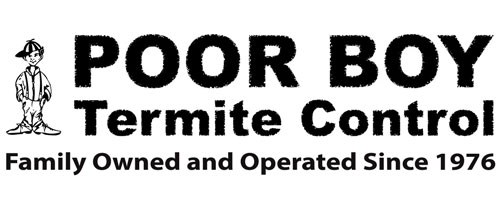No, termite damage is not typically covered by your renters, condo, or home insurance policy. The majority of insurance providers consider termite infestations preventable, so the cost of damage and removal will come out of the homeowner’s pocket.
Why Doesn’t Homeowners Insurance Cover Termites?
Insurers usually view termite damage as avoidable and sometimes due to a homeowner’s negligence. Homeowners insurance policies are created to cover you for any sudden or accidental events, and termite damage is not classified as either.
Be sure to always take precautions to prevent infestations before they occur. By the time you suspect you have termites, it’s often too late.
Does Homeowners Insurance Cover Termite Treatment?
Termite damage can unfortunately result in thousands of dollars in bills. And that’s only for repairs! That is before paying for removal and other issues termites can cause like health problems or difficulty selling your home.
Since routine maintenance is typically the homeowner’s responsibility, your insurance is not likely to cover termite treatment. It’s best to contact pest control as soon as you suspect an issue.
Is Carpenter Ant Damage Covered By Homeowners Insurance?
Unfortunately, carpenter ant damage is viewed the same way as termite damage. Insurance providers see this as a matter of general home maintenance.
Even if you had an infestation, insurance companies will not cover the damage caused by ants to any walls, ceilings or floors.
HOW DO TERMITES GET IN YOUR HOME?
Subterranean termite workers are the caste members responsible for consuming wood. They will gain entrance to a home by forming mud tubes that create a moist and protective passageway for them. Contrary to common belief, mud tubes are not constructed by drywood termites.
MUD TUBES
Once inside the home, these termites travel through their mud tubes, consuming wood in order to survive. Workers might construct mud tubes on pipes or conduit below the slab or running beneath the home’s foundation.
EXPLORATORY TUBES
Workers typically gain entry into homes by following through their underground tunnels, also referred to as exploratory tubes. These tubes can be found beneath the foundation or the home’s slab.
Once the termites reach the home, they will look for any cracks, gaps or other openings to allow them further access to wooden areas.
DROP TUBES
Termite workers found in crawl spaces sometimes build free hanging mud tubes, also called drop tubes. These tubes extend from the ground upward to the wooden floor joists and even the floor above ground.
WALL CRACKS AND GAPS
Wall cracks and gaps as small as 1/32 of an inch can be penetrated by termites. Workers can gain access through bath traps and cracks caused by the slab or foundation settling over time.
SIDING
Any home with siding that is partially beneath soil is at risk of a termite infestation. Termite workers can get into the home behind the siding. Termites can also gain access from outside sources, such as planter box and/or trellis wood.
Termite Control Phoenix Metro Area
Poor Boy Termite Control can solve all of you termite issues. We only deal with termites as the name implies. We use thermal imaging, with no drilling or guessing. At Poor Boy Termite Control we detect termites and treat them. If you have a termite infestation, Call Poor Boy Termite Control at (480) 994-4240 and schedule an appointment before the problem gets worse!







